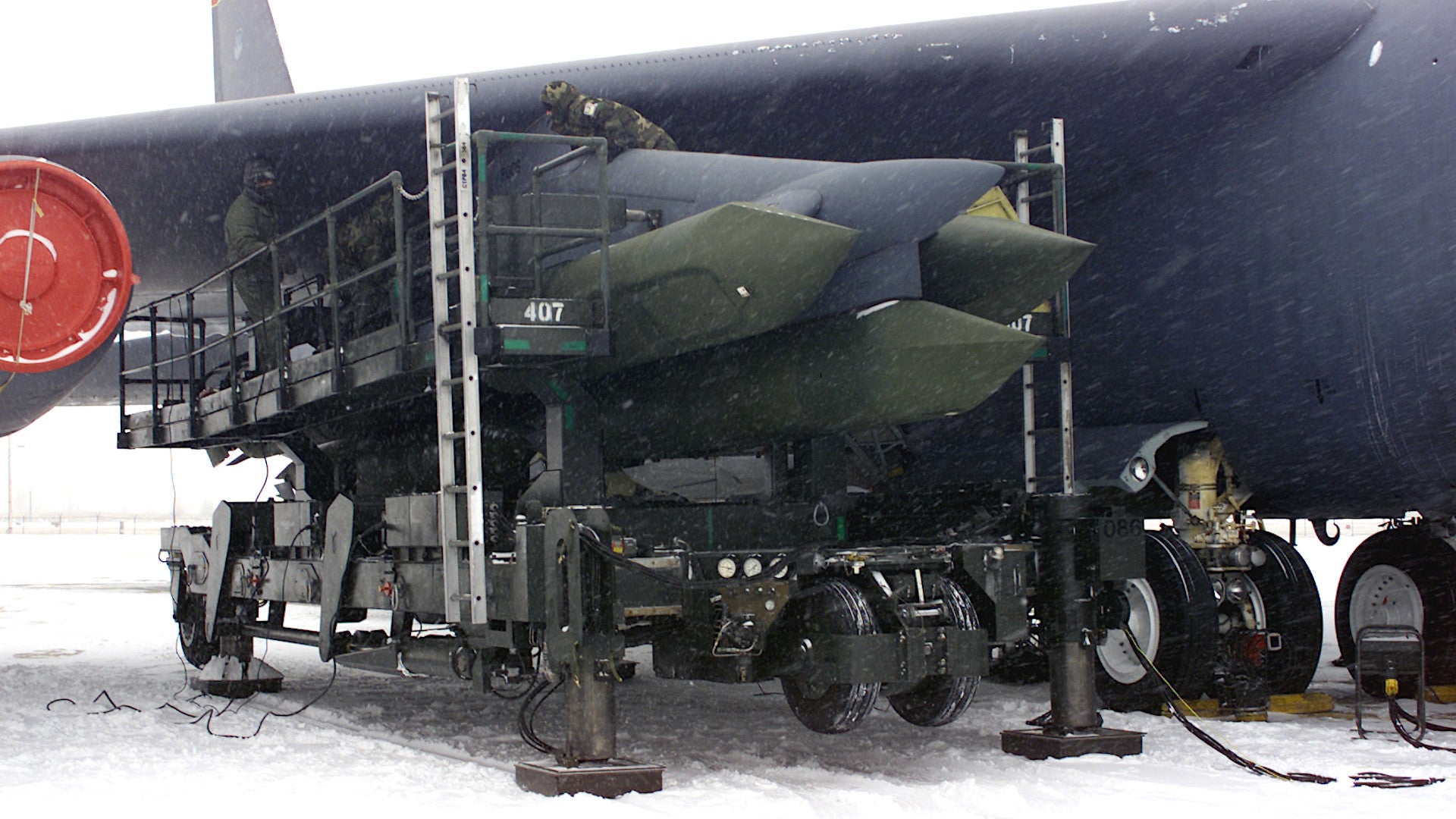The U.S. Air Force has quietly picked Raytheon to continue work on its future stealthy nuclear-armed cruise missile as the sole prime contractor. The company’s competitor, Lockheed Martin, will also continue to be involved in the project, but in a supporting role.
The Air Force Nuclear Weapons Center at Kirtland Air Force Base in New Mexico announced the change in plans for the Long Range Stand Off (LRSO) program on Apr. 17, 2020. Raytheon and Lockheed Martin had each received contracts to develop competing LRSO designs as part of the project’s Technology Maturation and Risk Reduction (TMRR) phase in 2017. The Air Force now says that it is focusing on Raytheon’s design on a sole-source basis. A formal down-select for the program wasn’t previously scheduled to occur until the 2022 Fiscal Year, according to the Air Force’s budget proposal for the upcoming 2021 fiscal cycle.
“This is not a down-select per se,” Elizabeth Thorn, the LRSO program manager at AFNWC, said in a statement. “Instead, we are reframing our relationship with Lockheed Martin to focus on specific technology maturation we believe either has future applicability for the final LRSO design or will reduce overall program risk.”
Hard details about either LRSO design are scant. The new missile is set to eventually replace the aging AGM-86B Air-Launched Cruise Missile (ALCM), which has been in service since the 1980s.

Unlike the AGM-86B, the LRSO will feature a new advanced stealth design to make it more survivable in the face of ever-improved integrated air defense systems, especially those that near-peer competitors, such as Russia and China, are fielding now or have in development. It will be the Air Force’s first stealthy nuclear-armed cruise missile since that service retired the then-state-of-the-art AGM-129A Advanced Cruise Missile (ACM) in 2012, which you can read about more in this past War Zone profile.
The AGM-129A may now actually offer some clues as to the LRSO’s design. General Dynamics originally developed the ACM in the 1980s, but its missile divisions subsequently became part of Raytheon, which remained the prime contractor for supporting those cruise missiles before their retirement.

Lockheed had also competed for the ACM contract with a stealth cruise missile with a shape derived from its F-117 Nighthawk stealth combat jet. It has continued work on stealthy and other advanced missile systems, including the Joint Air-to-Surface Standoff Missile (JASSM) family and its Long Range Anti-Ship Missile (LRASM) derivative, since then. As the Air Force has described it now, the service will leverage that experience to help in optimizing Raytheon’s core design.
“I am confident in the program office’s ability to execute the next phase’s contract negotiations in a single-source environment and maintain schedule and affordability,” Air Force Major General Shaun Morris, head of the AFNWC and the service’s Program Executive Officer for Strategic Systems, said in a statement. “We are committed to acquiring an affordable LRSO weapon system and we have exceptional cost and design insight into both contractors’ strategies, due to our progress with the acquisition reviews and the cost-capability trades.”
Morris stressed that the decision to “off-ramp” Lockheed Martin as an LRSO prime contractor was an amicable decision with the company, unlike the spat between the Air Force and Boeing over the Ground-Based Strategic Deterrent (GBSD) intercontinental ballistic missile program. Last year, Boeing announced it would not bid on the next GBSD contract, saying competitor Northrop Grumman had unfair advantages. Northrop Grumman now looks all but set to design and build the final GBSD design.
Regardless, the decision is a major victory for Raytheon over Lockheed Martin, the latter of which has been scooping up a large number of advanced missile contracts across the U.S. military in recent years, especially with regards to new hypersonic weapons, much of which remains highly classified. Lockheed Martin is also the prime contractor for JASSM and LRASM and the Air Force has separately hired the Maryland-headquartered defense giant to develop a new “extreme range” version of the aforementioned JASSM, known as the AGM-158D JASSM-XR. The company certainly has a lot on its plate already.

The Air Force expects the LSRO to begin entering service in 2030, at which point it will begin replacing the AGM-86B. The ALCM is presently the only nuclear weapon that the service’s B-52H bombers are certified to carry. The service also plans to integrate the new LRSO on its B-21 Raider stealth bombers.
Last year, Congress axed a requirement for a conventionally-armed LRSO variant, mirroring the AGM-86C/D Conventional Air-Launched Cruise Missile (CALCM). The Air Force retired the CALCMs in November 2019.
It had appeared that the AGM-158D JASSM-XR would instead meet the Air Force’s requirement for an advanced conventional cruise missile with a significantly extended range over the AGM-86C/D. However, earlier this month, Air Force General Timothy Ray, head of Air Force Global Strike Command (AFGSC), raised the possibility that his service could continue with the development of a conventional LRSO regardless as part of its plans to expand its long-range conventional strike capabilities, especially for the B-1B Bone bomber fleet.
No matter what, some eight years after the retirement of the AGM-129A, Raytheon is now set to be the primary supplier of the Air Force’s next stealthy nuclear-armed cruise missile.
Contact the author: joe@thedrive.com
